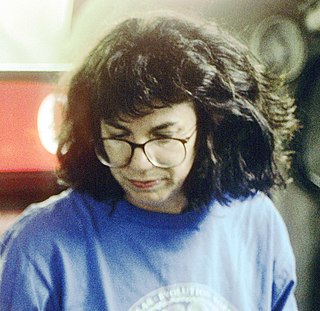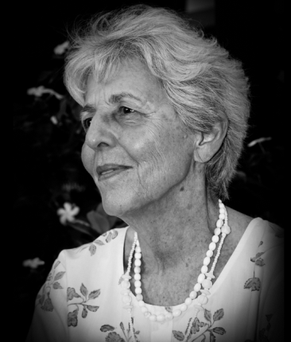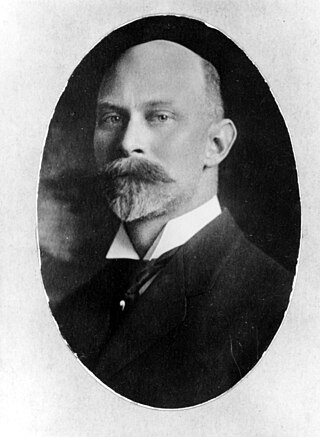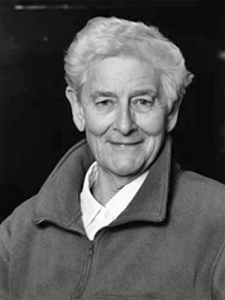
Barro Colorado Island is located in the man-made Gatun Lake in the middle of the Panama Canal. The island was formed when the waters of the Chagres River were dammed to form the lake in 1913. When the waters rose, they covered a significant part of the existing tropical forest, but certain hilltops remained as islands in the middle of the lake. It has an area of 15.6 km2 (6.0 sq mi).

The Smithsonian Tropical Research Institute is located in Panama and is the only bureau of the Smithsonian Institution based outside of the United States. It is dedicated to understanding the past, present, and future of tropical ecosystems and their relevance to human welfare. STRI grew out of a small field station established in 1923 on Barro Colorado Island in the Panama Canal Zone to become one of the world's leading tropical research organizations. STRI's facilities provide for long-term ecological studies in the tropics and are used by some 1,200 visiting scientists from academic and research institutions around the world every year.

Gotthilf Hempel is a German marine biologist and oceanographer.

Martin Humphrey Moynihan was a behavioral evolutionary biologist and ornithologist who studied under Ernst Mayr and Niko Tinbergen, and was a contemporary of Desmond Morris. He was the founding director of the Smithsonian Tropical Research Institute (STRI) in Panama.

Elisabeth Klara Viktoria Kalko was a German tropical scientist and ecologist working at the Smithsonian Institution and the University of Ulm.

Colleen Marie Cavanaugh is an American academic microbiologist best known for her studies of hydrothermal vent ecosystems. As of 2002, she is the Edward C. Jeffrey Professor of Biology in the Department of Organismic and Evolutionary Biology at Harvard University and is affiliated with the Marine Biological Laboratory and the Woods Hole Oceanographic Institution. Cavanaugh was the first to propose that the deep-sea giant tube worm, Riftia pachyptila, obtains its food from bacteria living within its cells, an insight which she had as a graduate student at Harvard. Significantly, she made the connection that these chemoautotrophic bacteria were able to play this role through their use of chemosynthesis, the biological oxidation of inorganic compounds to synthesize organic matter from very simple carbon-containing molecules, thus allowing organisms such as the bacteria to exist in deep ocean without sunlight.

The Liquid Jungle Lab (LJL) is a tropical marine research station on the island of Canales de Tierra on the western coast of Pacific Panamá along a primary marine biological corridor. The LJL research campus was completed in 2004 and is part of a private 3,500 hectare reserve composed of primary forest, mangroves, tide pools, and a rocky inter-tidal zone that transitions into fringing coral reefs.
The Bocas del Toro Research Station (BRS) is a field station of the Smithsonian Tropical Research Institute (STRI) on Panama’s western Caribbean coast, is a platform for both marine and terrestrial biodiversity research. The station hosts a diverse group of scientists from more than 20 countries, every year.

Olga Francesca Linares was a Panamanian–American academic anthropologist and archaeologist, and senior staff scientist (emerita) at the Smithsonian Tropical Research Institute (STRI) in Panama, who supported much of her research throughout her career. She is well known for her work on the cultural ecology of Panama, and more recently in the Casamance region of Southern Senegal. She is also concerned with the social organization of agrarian systems as well as the relationship between "ecology, political economy, migration and the changing dynamics of food production among rural peoples living in tropical regions".

Nancy Knowlton is a coral reef biologist and a former Sant Chair for Marine Science at the Smithsonian National Museum of Natural History.
Axoclinus rubinoffi, known commonly as Rubinoff's triplefin, is a species of triplefin blenny. This species is endemic to Malpelo Island in the eastern Pacific off Colombia. The specific name of this fish honours the American marine biologist Ira Rubinoff, Director of the Smithsonian Tropical Research Institute.
Les Kaufman is an evolutionary ecologist specializing in the biology and conservation of aquatic ecosystems. He has special expertise in coral reef biology, the evolution and ecology of tropical great lakes fishes, and ecosystem-based management of marine resources.
Elmer Yale Dawson was an American botanist, phycologist, taxonomist, ecologist, and naturalist writer. He popularized science and natural history with his books and articles on topics ranging from California cacti and North American cacti, to California seashore plants and marine algae, desert plant ecology, salt marsh wetlands, and anthropology topics including ethnohistory and ethnobiology of Seri Native American Indian culture of the northern Gulf of California.

Thomas Wayland Vaughan was an American geologist and oceanographer. He worked with the United States Geological Survey and United States National Museum, investigating the geology of the West Indies, Panama Canal Zone, and the eastern coast of North America. In 1924 Vaughan became director of the Scripps Institution of Oceanography and held the post until his retirement in 1936. His research work concentrated on the study of corals and coral reefs, the investigation of larger foraminifera, and oceanography.

Rosemary Helen Lowe-McConnell was an English ichthyologist, ecologist, and limnologist known for research on tilapia and aquaculture. Working in the tropical waters of Africa and South America, Lowe-McConnell was a pioneer in the study of tropical fish ecology and an early adopter of the use of scuba diving for scientific research.
Tyson Royal Roberts is an American ichthyologist. He has been described as "the world's foremost authority on Regalecus".

Mireya Dorotea Correa Arroyo was a Panamanian botanist and plant taxonomist known for her work with the flora of Panama.
Carole C. Baldwin is a research zoologist, curator of fishes, and the vertebrate zoology department chair at the National Museum of Natural History. She researches the diversity and evolution of coral reef and deep sea fishes through integrative taxonomy. She is on the board of directors of the National Aquarium in Washington, D.C. She is a senior author on the educational seafood cookbook One Fish, Two Fish, Crawfish, Bluefish - The Smithsonian Sustainable Seafood Cookbook, and the principal investigator on the Deep Reef Observation Project (DROP) which researches reefs to 300 meter depths. She was inducted into the Women Divers Hall of Fame in 2003.
Egbert Giles Leigh, Jr. is an evolutionary ecologist who spends much of his time studying tropical ecosystems. He is a researcher for the Smithsonian Tropical Research Institute and is well known for the work he has done on Barro Colorado Island. He is a US citizen, but has resided at the Smithsonian in Panama for nearly 50 years. Along with studies on Barro Colorado Island, Leigh is also known for the research he has done related to the Isthmus of Panama and its historical significance on the evolution of South American species.
Annette A. Aiello is an American zoologist, botanical entomologist, and professor. She develops academic activities at the Smithsonian Tropical Research Institute.











